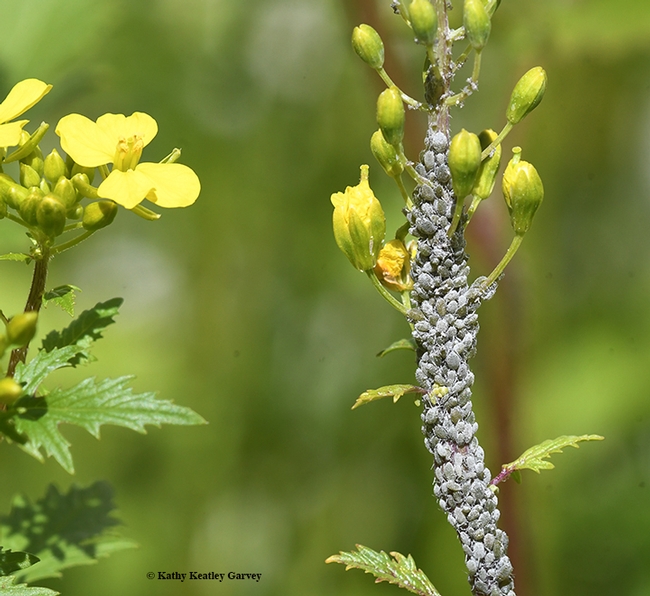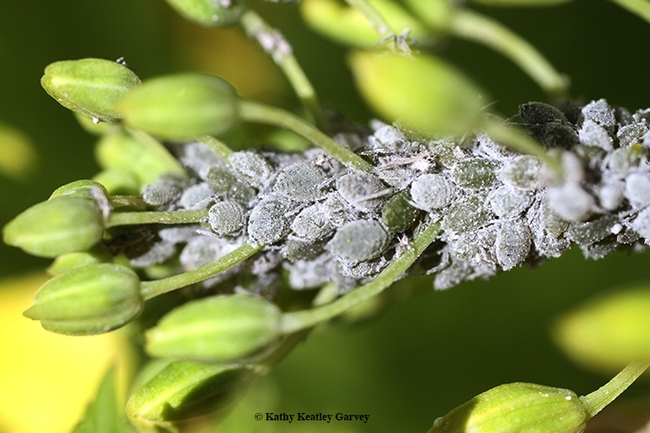"Eat your greens," they say.
Okay, we don't need any encouragement, but apparently many other folks need a push, a poke or a prod to eat cole crops, including cabbage, cauliflower, Brussels sprouts, broccoli, mustard, kale and kohlrabi.
Well, cabbage aphids need no encouragement. We spotted some dusty blue-gray aphids, Brevicoryne brassicae, slurping the very life blood out of our mustard plants yesterday in Vacaville, Calif. That's what they do, and they do it well, thank you.
Frankly, we're so accustomed to seeing green and yellow aphids, that the blue-gray colors are sort of a treat. Sort of. But they are a pest. These European natives can and do cause significant yield losses to cole crops (mustard family, Brassicaceae).
And they are not social distancing.
The UC Statewide Integrated Pest Management Program (UC IPM) says: "They commonly occur in dense colonies, often covered with waxy droplets. They prefer to feed on the youngest leaves and flowering parts and are often found deep within the heads of cabbages or Brussels sprouts. The aphid has a simple life cycle with adult females giving birth to live offspring throughout the year in most parts of California. Both winged and wingless adults occur; the winged adults have a black thorax and lack the waxy coating. The aphid does not infest noncruciferous crops but can survive on related weed species when cole crops are not in the field."
UC IPM goes on to say that "Important natural enemies include lady beetles, syrphid fly larvae, fungal diseases, and the parasitic wasp, Diaeretiella rapae."
Nary a lady beetle (aka ladybug) in sight--but a syrphid (aka flower fly or hover fly) just landed.
Attached Images:

